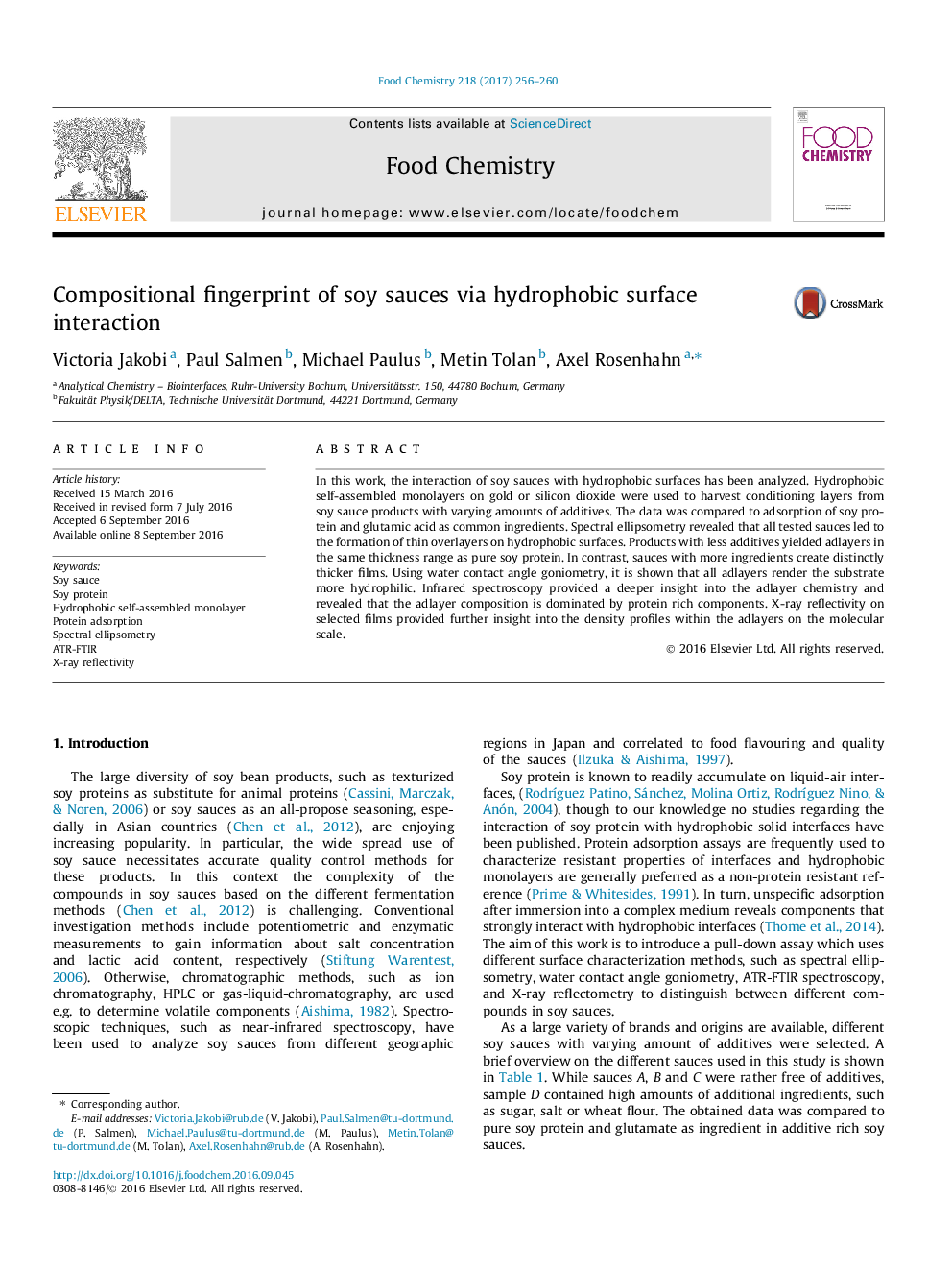| Article ID | Journal | Published Year | Pages | File Type |
|---|---|---|---|---|
| 5134063 | Food Chemistry | 2017 | 5 Pages |
â¢Adlayers formed by soy sauces on hydrophobic surfaces differs for different brands.â¢ATR-FTIR spectra provide insight into the chemistry of the adhered material.â¢X-ray reflectivity shows a structured density profile of the soy sauce adlayer.â¢Adsorption of soy sauce ingredients could be a screening tool for quality control.
In this work, the interaction of soy sauces with hydrophobic surfaces has been analyzed. Hydrophobic self-assembled monolayers on gold or silicon dioxide were used to harvest conditioning layers from soy sauce products with varying amounts of additives. The data was compared to adsorption of soy protein and glutamic acid as common ingredients. Spectral ellipsometry revealed that all tested sauces led to the formation of thin overlayers on hydrophobic surfaces. Products with less additives yielded adlayers in the same thickness range as pure soy protein. In contrast, sauces with more ingredients create distinctly thicker films. Using water contact angle goniometry, it is shown that all adlayers render the substrate more hydrophilic. Infrared spectroscopy provided a deeper insight into the adlayer chemistry and revealed that the adlayer composition is dominated by protein rich components. X-ray reflectivity on selected films provided further insight into the density profiles within the adlayers on the molecular scale.
Graphical abstractDownload high-res image (78KB)Download full-size image
